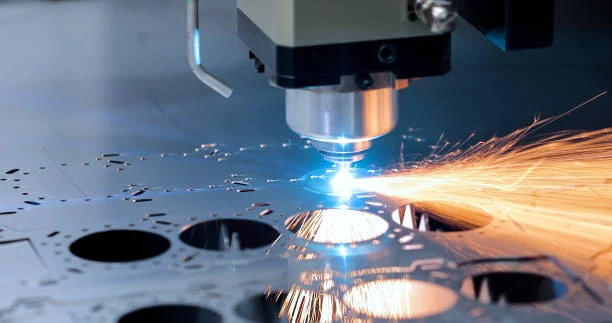As aerospace and robotics push for tighter, tougher, and more reliable parts, shops now lean on CNC machining instead of assembly-line casting. Custom work is no longer a nice-to-have; it is the only way to keep up. Machines ask for ever-shrinking envelopes, more integration, and delivery times that leave little room for error.
Inside that fast pace, rapid prototyping shines. It lets designers test, tweak, and lock in designs while making sure even the trickiest geometry comes off the machine with the same quality every time.
Why Aerospace and Robotics Crave Custom Parts
Customization sits at the center of almost every new advance in planes and robots. Today`s systems need components that:
- Slide into crowded bays with no extra space
- Face scorching heat or crushing stress
- Mesh perfectly with other tight-tolerance assemblies
- Arrive in small batches that still hold laser-like tolerances
General-purpose parts cannot deliver that level of fit. When the clock is ticking, makers turn to CNC-machined custom blanks because they cut, drill, and polish complexity down to the microns required, all while getting the job to the floor faster than any other method.
Companies can quickly test new designs and swap out parts thanks to fast, precise prototyping machining. That speed lets them stay nimble in the face of shifting project goals and new tech.
Why CNC Precision Machining Fits Complex Industries
CNC machining beats older shop methods because computer-controlled tools make intricate, exact parts with far less hands-on work. In B2B fields like aerospace and robotics, customers crave both rock-solid accuracy and the freedom to push bold designs.
The main perks of CNC precision machining are:
-* Repeatability and accuracy that meets flight and movement safety standards
-* Wide material range, from aluminum and titanium to stainless steel and engineering-grade plastics
-* Swift CAD-to-production handoff, trimming weeks from the schedule
Take a robotic arm: every joint, cable, and actuator must mesh perfectly, or motion turns clumsy. CNC-made parts reduce that risk, thanks to steady automation and strict checks at every stage.
Put simply, matching CNC precision machining with rapid prototyping gives fast-changing, tech-heavy industries a flexible, reliable path from idea to finished component.
Speeding Up Product Development with Precision Prototype Machining
Getting a new part to market fast can make or break a company in aerospace or robotics. With precision prototype machining, engineers and builders can:
- Quickly make working models
- Check how a part looks, fits, and performs
- Revise the design without costly new tooling
CNC machines hold tighter tolerances than sand-casting or hand-milling, even in the first production runs. That reliability lets teams test drone skins or robot grippers in real settings, refine them on the spot, and lock in the final specs without delay.
Because the CNC process is fully digital, every tweak recorded during prototyping slides straight into the full-scale plan.
Meeting Tough Material Needs for Each Job
Aerospace and robot parts often demand unique materials: lightweight alloys, heat-resistant plastics, or metals that shrug off corrosion. The exact mix depends on whether a piece rides high in the stratosphere, bends in a clean-room arm, or guards a military assembly line.
CNC precision machining works with a broad mix of materials, such as:
- Lightweight metals like aluminum and titanium
- Tough alloys found in aerospace airframes
- Specialty plastics used in low-friction or insulated robot parts
With precision prototyping machining, shops see how each material behaves during cutting and later in the real world. That clear picture helps engineers make smarter choices early, saving time and money by avoiding expensive mismatched parts.
From One-Off Prototypes to Low-Volume Production
Mass production fills store shelves, but aerospace projects and robots often need small runs made for a single job. CNC machining shines in these low- to medium-volume orders because:
- No costly molds or dies are needed
- Existing programs can be tweaked and reused
- Quality stays steady from the first part to the last
Because of this flexibility, CNC precision machining parts serve not only prototypes but also final runs. Builders can order just a handful of pieces and still get the same solid quality usually reserved for large batches.
Say a factory needs one hundred servo housings for a next-generation robot. They all have to match the first sample and fit into tight tolerances. That is where precision prototyping machining makes the switch to high-volume work smooth and reliable.
Looking Ahead: Future Trends in CNC Machining for Specialized Industries
As the worlds of aerospace and robotics push forward, the demand for faster, smarter part-making only gets stronger. Several trends are set to steer CNC machining in those fields:
- Smart machining with AI tool-path tweaks that shave cycle times and boost surface quality
- Real-time process checks and adaptive cuts that correct tolerances on the fly
- Hybrid processes that blend CNC with 3D printing for parts with built-in complexity
A related idea is Design for CNC, where parts are shaped from the start to fit cutter strengths and limits. That focus cuts setup time and trims the amount of work done after the machine stops.
Inside this picture, CNC precision machining parts and precision prototyping work will be key, letting suppliers tackle tomorrow’s technical hurdles today.
Conclusion
Demand for custom, top-quality parts keeps rising in the aerospace and robotics worlds, and right now CNC machining stands out as the most flexible way to deliver them on time and on spec. When B2B firms add precision prototyping machining to their process, they cut development time, slash mistakes and give customers the exact part they asked for.
Whether the job is fast prototypes, special-material runs or small production lots, cnc precision machining parts are already rewriting the rules for how complex machines get made. Companies that want to remain ahead in cutting-edge markets no longer treat these precision methods as a choice-they treat them as a must-have.

Lexy Summer is a talented writer with a deep passion for the art of language and storytelling. With a background in editing and content creation, Lexy has honed her skills in crafting clear, engaging, and grammatically flawless writing.



